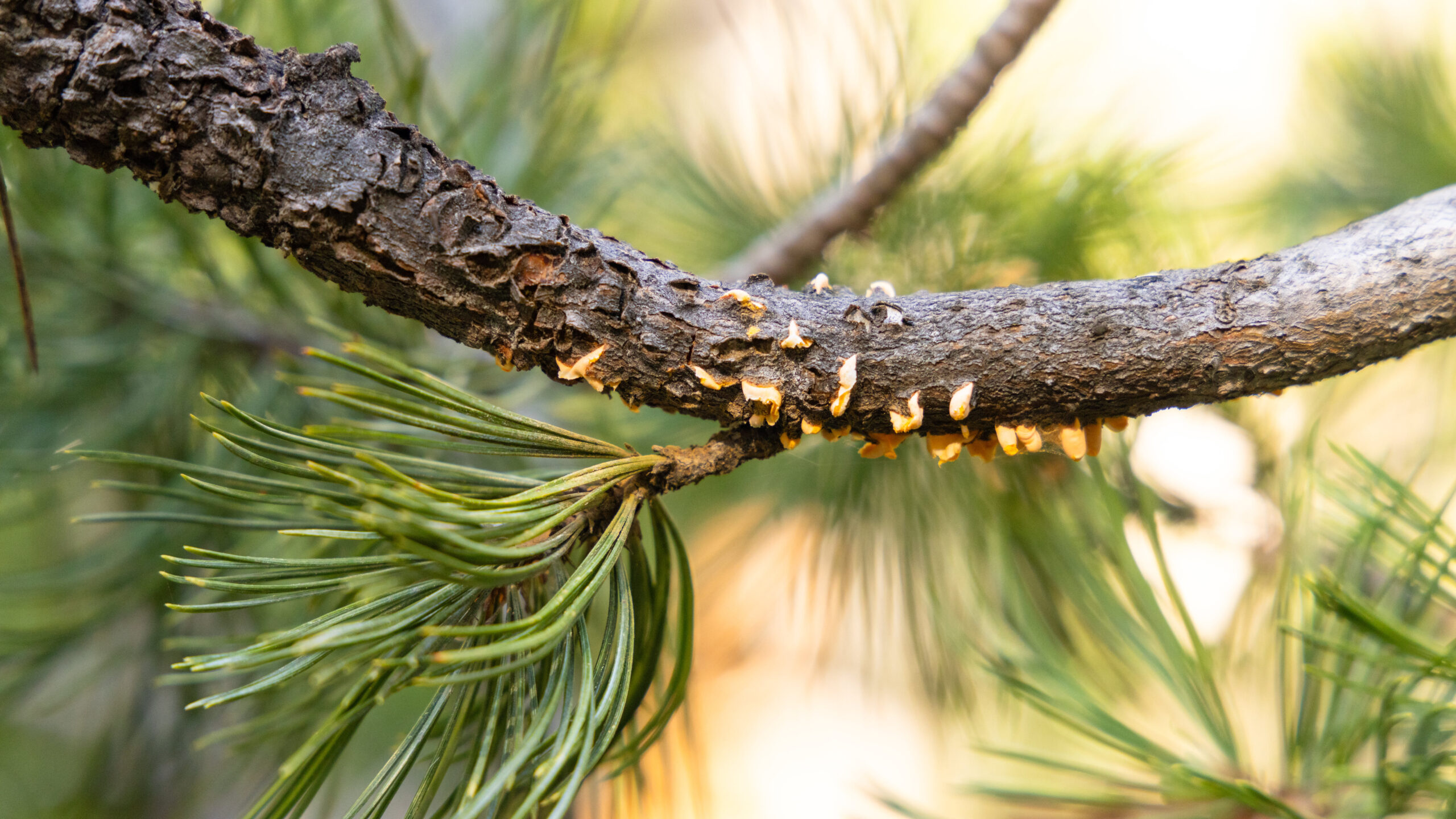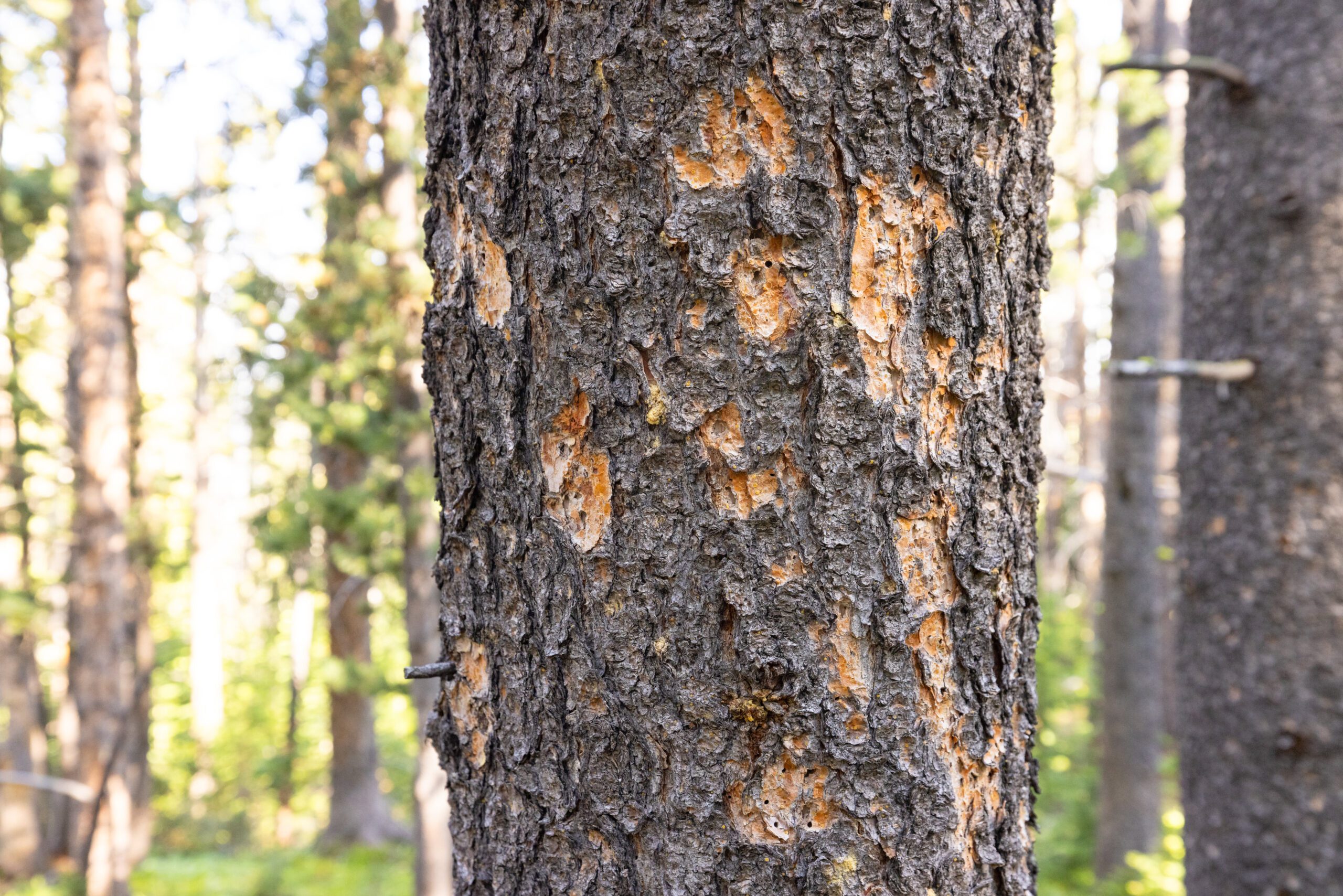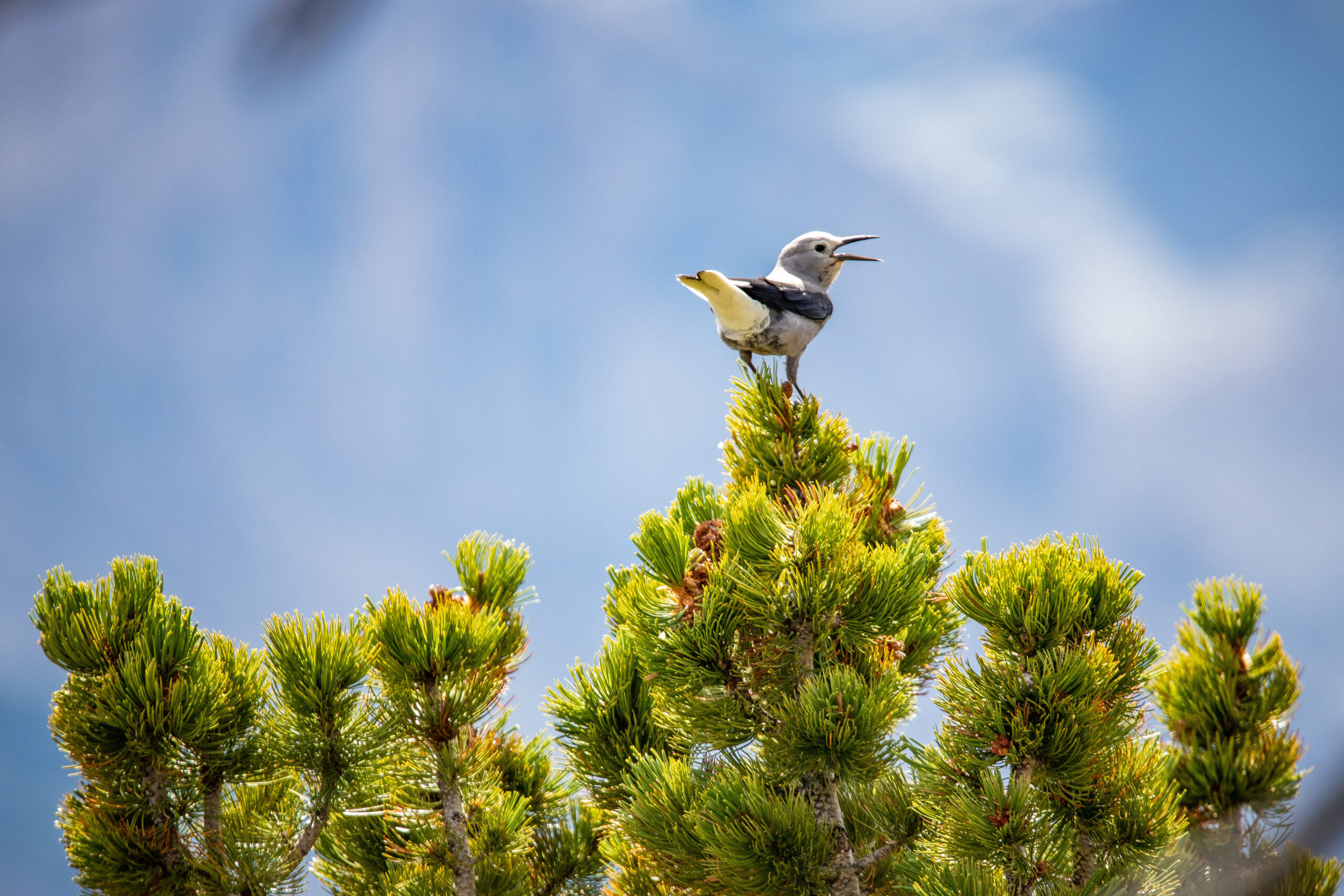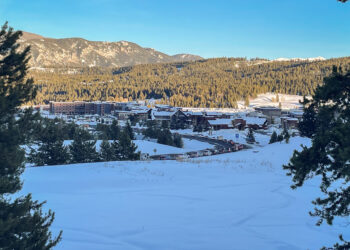Whitebark Pine Ecosystem Foundation has now certified six ski areas for supporting the keystone species, listed as ‘Threatened’ in 2023
By Jack Reaney ASSOCIATE EDITOR
The Yellowstone Club has earned certification as a Whitebark Pine Friendly Ski Area from the Whitebark Pine Ecosystem Foundation, based in Missoula. Five other ski areas in North America are certified, including one Montana peer, Whitefish Mountain Resort.
Whitebark pine survives at high elevations and plays a key role in ecosystems across the Mountain West, including the Greater Yellowstone Ecosystem. It protects snowpack, regulates streamflow and stabilizes soils. Its seeds provide a high-calorie food source for wildlife including grizzly bears, red squirrels, and Clark’s Nutcrackers—a bird species responsible for transporting whitebark pine seeds.
In January 2023, whitebark pine was listed as “Threatened” under the Endangered Species Act. Threats include nonnative fungus causing “white pine blister rust” that can damage and eventually kill the pines, increased wildfire prevalence and intensity, and native mountain pine beetles that “quickly decimate infested whitebark pine forests,” according to a National Park Service ESA listing.

NPS notes that climate change exacerbates these primary threats.
“Specifically, warmer temperatures enable mountain pine beetle to reproduce in one-year rather than multi-year cycles. Between 2007 and 2009, this shift resulted in a mountain pine beetle epidemic that killed 80% of the oldest trees in the ecosystem,” NPS wrote.
Yellowstone Club is the first ski area on exclusively private land to earn the “Whitebark Pine Friendly” designation, according to a Dec. 11 press release from the Whitebark Pine Ecosystem Foundation. As part of YC’s restoration management plan, the 2,900-acre private club has transplanted more than 500 whitebark pines to areas with limited regeneration and established 18 permanent monitoring plots to track fertility and mortality rates, blister rust severity and beetle presence, and possible sites for future restoration.

“The Yellowstone Club consistently has demonstrated its commitment to restoring whitebark pine and setting an example for the outdoor industry in conserving these vital mountain forests,” Mike Giesey, chair of the foundation’s Ski Area Partnership Committee, stated in the release.
Jeff Cadry, YC environmental manager, explained how whitebark pine conservation can be carried out across any private lands by building partnerships with leaders in forestry management.
“Over the past 15 years, we have facilitated scientific research, implemented a monitoring program, and completed many restoration projects to promote whitebark pine into the future of our forests,” Cadry stated. “It’s an honor to partner with the Whitebark Pine Ecosystem Foundation to be the first ski area in the U.S. that owns and manages its own land to earn their seal of approval in our conservation efforts.”
In 2024, YC will install an interpretive sign near a popular ski trail highlighting the ecological role of whitebark pine trees, according to the release.
“We are proud to be recognized for our efforts and encourage other ski resorts to join us in taking action to conserve this vital species,” Cadry stated.
Short film describes ‘breathtaking’ loss
On Sept. 28, conservation leaders gathered at the Museum of the Rockies in Bozeman to discuss whitebark pine conservation. The event included a panel with representatives from the Whitebark Pine Ecosystem Foundation, Yellowstone National Park, American Forests, Confederated Salish and Kootenai Tribes and the Ricketts Conservation Foundation.
A short film screened at the event, designed for national park visitor centers and produced by filmmaker Eric Liner from the Cornell Lab of Ornithology, and the Ricketts Conservation Foundation. The family-oriented film includes a storybook theme and blends animation with documentary storytelling. Liner also produced a similar, documentary-oriented prequel to the short film: “Hope and Restoration: Saving the Whitebark Pine” explains the importance of whitebark pine, and the challenges and solutions to its survival.
The 14-minute film also shows the interdependence with Clark’s Nutcrackers, birds inextricably tied to the tree species’ health.
“And so the two are intertwined,” Doug Smith, longtime wolf biologist for Yellowstone National Park, now retired, explains in the film. “So it’s a really, very important relationship and it’s starting to fall apart. It’s falling apart because the whitebarks are dying for multiple reasons.”

At the September event in Bozeman, Liner said it’s normal to be unaware of whitebark pines and their impact, even though the trees are prevalent in southwest Montana mountains.
“Working on this project, it’s dawned on me: I love whitebark pine, and never really knew it,” Liner told the audience as he introduced his film.
Efforts are under way
To beat blister rust, researchers can identify fungus-resistant trees—which takes 5 to 10 years—harvest their seeds and manually plant resistant forests. That process is effective but expensive: each new tree costs about $1,900, Dr. Diana Tomback, policy and outreach coordinator for the Whitebark Pine Ecosystem Foundation, said at the September event.
Still, Tomback expressed confidence that if conservation continues, after a few human generations, “we think we can get the entire range of whitebark pine restored.”
On Sept. 26, nonprofit American Forests announced a five-year partnership with the National Park Service to restore whitebark pine in 10 national forests.
“Initial projects in Yellowstone, Glacier and Grand Teton National Parks are part of $44 million in funding from the Inflation Reduction Act, the largest climate and conservation investment in history,” an American Forests news release stated.
Montana State University also published a study in October 2023, comparing juvenile whitebark and limber pine trees with hopes of identifying physiological traits that may influence the species’ respective abilities to resist environmental stress.
“Plants, vegetation, forests are incredibly valuable for ecosystem services,” MSU researcher Danielle Ulrich stated in the MSU news release. “They form the backbone of many ecosystems, especially at high elevations. High-elevation pine research will continue in my lab—we have lots of irons in the fire right now.”
More information is available online in a series of short educational videos from the Whitebark Pine Ecosystem Foundation.













